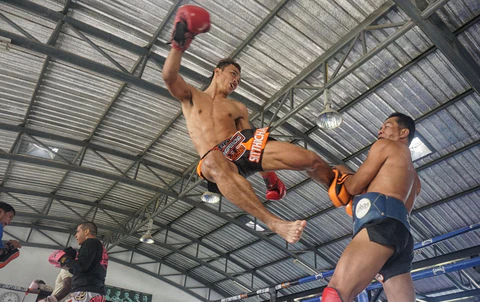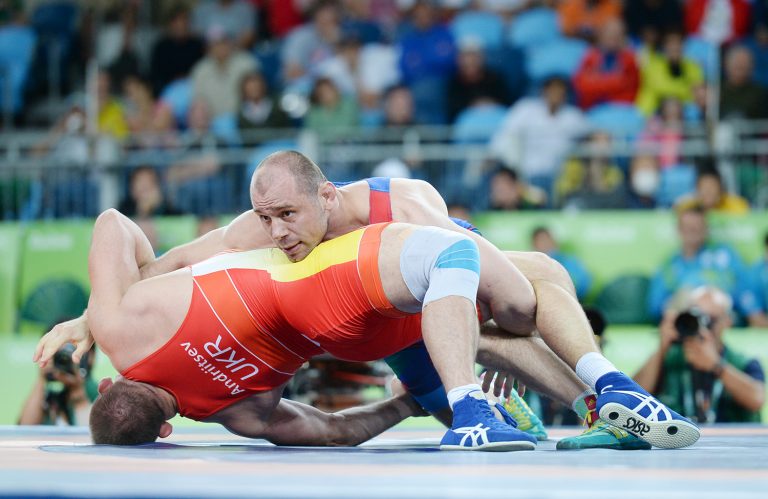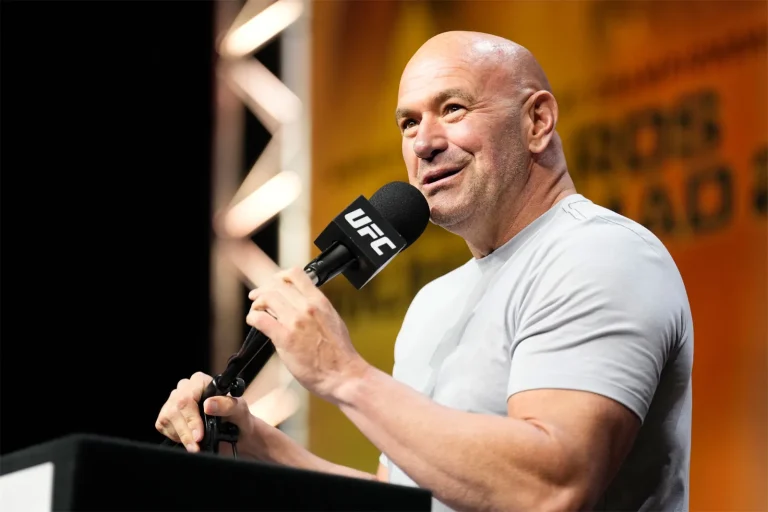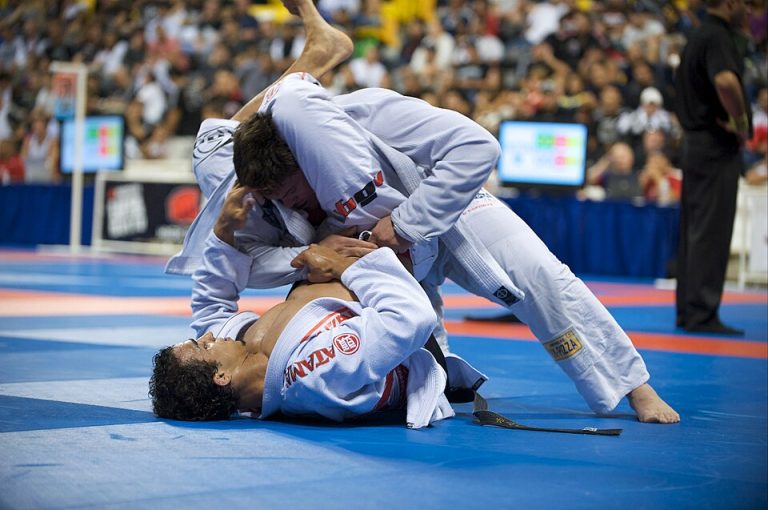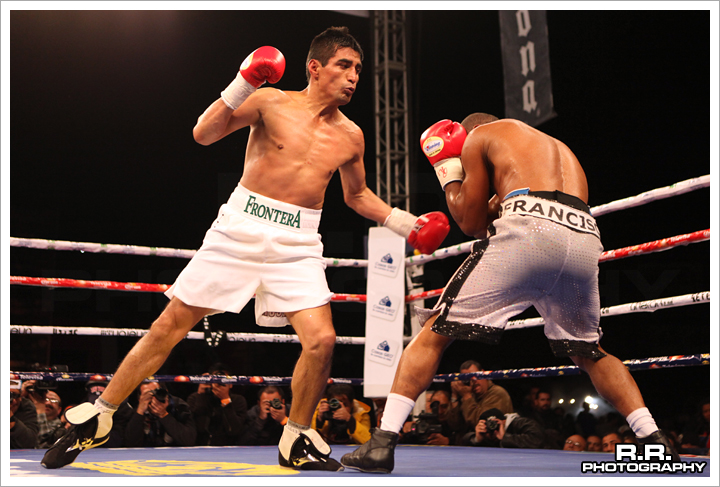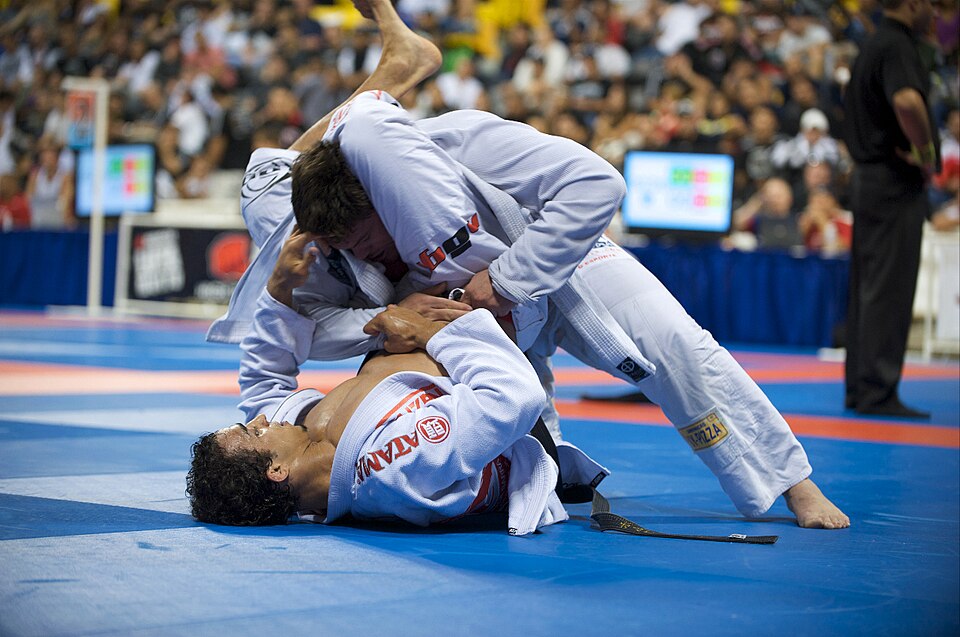
Dreaming of rolling on the mats for a living? Many of us wonder, “Can sport Brazilian Jiu-Jitsu (BJJ) pay the bills?” The short answer is: sometimes, but it’s tough. Sport BJJ has exploded in popularity, with epic tournaments like ADCC, IBJJF World Championships, Polaris, and now million-dollar events like the Craig Jones Invitational drawing huge attention. But the money on the line is usually modest, often far below that of other combat sports. You might rack up medals and respect, but turning that into cash can be a real challenge.
This guide will break down exactly how sport BJJ athletes earn money. We’ll look at tournament prizes, sponsorships, teaching income, and more, comparing what top stars make versus the average grappler. We’ll even crunch real figures from major events and credible sources. By the end, you’ll have a crystal-clear picture of whether chasing the BJJ dream can be a sustainable career.
Where the Money Comes From
First, let’s map out all the income streams a sport BJJ athlete might tap into:
- Tournament Prize Money: Wins (and sometimes placements) in competitions like IBJJF tournaments, ADCC, Grappling events, etc., bring cash prizes.
- Sponsorships: Endorsements and gear deals from martial arts brands such as kimono makers, rash guard companies, and supplement companies.
- Instructional Videos and Seminars: Many elite athletes create online video courses (like on BJJ Fanatics) or travel to teach seminars. This can be a considerable income source for stars.
- Coaching/Academies: Teaching classes, private lessons, or running your academy full-time. Think of it like any job or business income.
- Other Ventures: MMA fights, social media/online content, and affiliate marketing are all popular sources of income, but your marketing chops sometimes matter more than your BJJ skills.
Top Brazilian Jiu-Jitsu athletes usually combine several of these income sources to sustain themselves. Gordon Ryan, for example, competes and wins at major events, sells high-selling instructional videos (he claimed ~$1.6 million per month on the biggest platform), teaches seminars, and collects sponsorships. He also provides private lessons to the likes of MMA GOAT Jon Jones. But most grapplers aren’t Gordon Ryan.
Generally, tournament winnings alone are modest unless you’re winning finals. For context, the total prize pools at major BJJ events often run in the low tens of thousands of dollars. Even at the prestigious ADCC Worlds, only winners and medalists cash in – $10,000 for a weight-class champion and smaller amounts for runners-up. The ADCC has just increased its offerings by adding a flat $ 2,500 purse for all competitors. However, the norm for most BJJ tournaments is that most participants take home no prize money at all. You generally earn tournament cash only if you’re placing near the top.
Meanwhile, teaching and coaching are significantly more dependable sources of income. If you’re a black belt instructor in the U.S., you could earn on the order of tens of thousands per year (often $30k to $70k, varying by location and experience).
ZipRecruiter estimates the average BJJ instructor salary earns around $50,000 per year in the U.S., with top instructors exceeding $95k. Glassdoor suggests an average of around $73,000 annually. Many professional Brazilian Jiu-Jitsu athletes still rely on tournaments and sponsorships for income, which means teaching income is often a necessity, not a bonus.
Making a living from sport BJJ usually means piecing together multiple income streams. Rarely can you survive on one alone. Let’s look closer at each.
Tournament Payouts: Big Wins, Small Checks
Major BJJ events do offer cash, but it’s usually small compared to pro boxing/MMA. Here are some examples of prize money at big grappling tournaments:
- ADCC World Championships (bi-annual): First place in any adult weight class is $10,000; 2nd gets $5,000; 3rd $3,000. 4th place is $1,000. ADCC also has an “absolute” (open-weight) division: winning that nets a whopping $40,000. ADCC added $2,500 show money to each competitor, so even first-round losers get something. Still, only the medalists walk away with significant prizes.
- IBJJF World Championship (Gi): Historically, the IBJJF Worlds gave little or no prize money to gi champions, often just trophies. However, IBJJF’s newer events, like The Crown pro tournaments, now offer serious cash. For example, the 2024 IBJJF Crown will pay $20,000 to each division winner, plus $5k for 2nd and $3k for 3rd. The 2023 crown was $15k to champs.) The IBJJF Open No-Gi and Pans No-Gi have small pro brackets with a few grand for winners. But regular IBJJF Gi Worlds still mostly rely on prestige, not payouts.
- Polaris and Submission Underground: These slick TV-friendly grappling leagues typically pay contracted athletes, but details aren’t public. Championship belts and bragging rights are the prize; any cash is usually pre-negotiated per match.
- Eddie Bravo Invitational (EBI): Back in its prime, EBI split a modest pot among the top finishers (e.g., champion gets a couple thousand, a smaller pool to 2nd/3rd). Not life-changing money.
- F2W, Fight 2 Win: Similar to EBI, the champion might see $1,000 to $3,000. These tournaments help with visibility more than pay.
- Regional/Local Tourneys: Usually none. If you win a small open, you might pay for entry and travel more than you earn. Some grassroots events may toss a champion $200 to $500, but don’t count on it.
- Craig Jones Invitational (CJI): An outlier that made headlines in 2024 – each weight-division winner got $1,000,000, and every participant earned $10,001 just to show up! This was a one-time splash by grappler Craig Jones to highlight pay issues. CJI raised the bar, but it’s not typical.
You may pocket tens of thousands of dollars if you win ADCC or an IBJJF pro bracket. But if you lose early, you get zero minus your travel costs. ADCC’s total prize pool for a recent event was about $230,000 across 105 athletes, imagine splitting that thin! The average payout per ADCC entrant ends up only a few thousand dollars, and that’s including the champion’s windfall.
Competing at major grappling events can be thrilling, but the prize money is usually modest. Even ADCC champions only win around $10,000 (plus $40,000 for winning the absolute division), which barely covers travel and training costs.
Example Prizes by Tournament
- ADCC World Champion: $10,000; runner-up $5,000; 3rd $3,000. Plus $40,000 if you win Absolute.)
- IBJJF Crown Champion: $20,000 (was $15k in 2023).
- IBJJF Pans No-Gi / Other Major IBJJF Pro: ~$3,000 to $4,000 to champion, less for runners-up.
- Superfights (e.g., Polaris, SUG): Varies widely; sometimes token $ or sponsor deals.
- Local Open: Usually $0–$500 for 1st place (if anything).
Big tournament wins are rare, and the cash is small unless you’re at the absolute top of the sport. This helps explain why many grapplers also teach full-time or rely on sponsorship.
Top Earners vs. Average Grapplers
Not all BJJ athletes are created equal in earnings. A few “superstars” pull in six or even seven figures per year when you count all sources, while the average competitor makes far less.
- Elite Pros (e.g. Gordon Ryan, Andre Galvão, Roger Gracie): These guys have massive followings, sponsor deals, and wins in high-profile events. Gordon Ryan, for example, has publicly boasted about his income: roughly $200,000 per year just from tournament winnings (that’s before taxes), plus mega-bucks from his online instructionals (he claimed about $1.6 million per month selling BJJ videos). In interviews, he said he “makes more money than most UFC champions.” Even if you cut that in half after taxes and expenses, he’s living the dream.
Roger Gracie, legend of Gi BJJ, reportedly commands about $400,000 per year from seminars, teaching, and sponsorships (his on-mat prize money history is modest, but his name brings cash). Andre Galvão is estimated to earn around $500,000 yearly thanks to his ADCC Superfights, his network of academies (Atos), and merch deals.
These are outliers. GrapplerHQ summarizes: Ryan gets ~$200k+ from comps, Roger about $400k, Andre ~$500k. But these guys also run top gyms and sell seminars. Their situations mix education, promotion, and entrepreneurship with competition. - Mid-Level Pros: If you’re a national champ or black belt world medalist, you might win a few big tournaments (say ADCC trials, EBI) and teach a busy class schedule. Your tournament take might be in the $5,000 to $20,000 range per year if you win one or two events, plus coaching income. Sponsorship deals might give a few hundred to a few thousand dollars in gear and supplements. Unless you’re also doing seminars or content creation, annual income might end up in the $30,000 to $60,000 range. You may break even if careful, but it’s not plush.
- Average Competitors: Most BJJ competitors train a lot but earn very little from the sport. Many tournaments only pay a few places, and local events often pay nothing. One estimate suggests the average pro jiu-jitsu athlete pulls in only about $1,500 per year from competition. Yikes. That figure means after year-long efforts, most competitors pay their own way. Keep in mind that’s competition earnings alone; many have day jobs or teach to survive.)
In practical terms, only the very top competitors can rely on sport BJJ as full-time work. Even elite black belts often spend a lot of time teaching or competing in MMA to pay the bills. The truth is that the best BJJ guys make money from multiple sources, and even then, it’s often six figures only at the high end. “Hobbyists” or lower-level pros often juggle training around other jobs.
Putting it together:
- Top champions (Gordon Ryan et al.) may earn $200k+ just competing, plus far more through teaching/content.
- Legends like Roger Gracie leverage their name to earn approximately $ 400,000 yearly.
- Solid pros might earn tens of thousands per year, combining small tournament purses with teaching.
- Most competitors earn near-zero from sport alone, often under a few thousand per year from wins.
If you become a professional BJJ athlete, be ready: it’s a sport with a steep earnings pyramid. The guys at the top compete for millions of dollars in prestige and sometimes cash prizes, while the base earns scraps.
Beyond the Mat: Teaching and Seminars
Since tournament money is spotty, most full-time BJJ pros rely on coaching and teaching as their bread-and-butter. Running classes at a gym can be a stable income source – think career instructor, not just competitor. Many world champions open their academies, allowing them to retain all student fees or work as a head coach, which can bring in a moderate salary.
- Academy Owners: If you build your own school, success varies. Some can clear six figures if they grow a large team. Others just make ends meet. Start-up costs and rent can eat profits. However, successful martial arts dojos do well financially. For example, getting 200 students to sign up at a dojo that charges $150 monthly per student brings in $30,000 in revenue monthly, more than enough to cover rent, additional instructors, and utilities, while earning a juicy profit. The most successful martial arts academies have thousands of students, so do the math.
- Assistant Instructors / Gym Staff: Often earn hourly wages. These average $15 to $25 per hour, depending on the region. Full-time hourly instructors net $30,000 to $50,000 per year. ZipRecruiter/Glassdoor data suggest around $50,000 to $73,000 annually for a BJJ instructor role, though results vary by location.
- Seminars and Workshops: Traveling to teach a seminar, you might charge $100–$200 per student for a few hours. A big-name grappler can host hundreds of students in a day, so even one seminar can bring in thousands of dollars. Grapplers who conduct numerous seminars worldwide can earn a significant income. For instance, Roger Gracie reportedly makes a large chunk of his $400,000 annual revenue from high seminar fees.
Important: Teaching pays the bills, but it also eats time. Many pros split their training time between coaching classes and prepping for comps. If you plan to make BJJ your full-time job, be prepared to wear multiple hats: competitor and coach.
Social Media: Monetizing Your Brand
In today’s digital age, your social media presence can be as lucrative as your performance on the mats if you play it smart. Whether you’re posting highlights from training, sharing technique breakdowns, or just giving your followers a peek into your life, platforms like Instagram, YouTube, TikTok, and Facebook can become solid income streams. Here’s how:
1. Sponsored Posts & Brand Partnerships
Brands will pay you to showcase their gear, including gis, rash guards, supplements, and lifestyle products. Earnings depend heavily on your follower count and engagement rate:
- Nano-influencers (under 10K followers): $10–$100 per post. Great for local brands or niche BJJ gear companies.
- Micro-influencers (10K to100K followers): $100–$500 per post, often combining product giveaways and discount codes.
- Macro-influencers (100K to 1M followers): $5,000–$10,000 per post, plus free product lines or affiliate deals.
- Mega-influencers (1M+ followers): $10,000+ per post, sometimes six-figure deals for long-term ambassadorships.
For example, Roy Dean (@roydean_, 17K followers) is estimated to pull in around $934 per sponsored post on Instagram, according to Influencer Hero, not bad for a few minutes filming a technique clip.
2. Ad Revenue & Platform Monetization
- YouTube: If you create detailed instructionals or entertaining vlogs, you can earn $1,000 to $10,000+ per month from ad revenue and channel sponsorships.
- TikTok & Instagram Reels: Short-form video monetization is a newer but growing trend—some creators report $200 to $2,000/month from in-stream ads and bonuses once they reach eligibility thresholds.
3. Affiliate Marketing
Link to gear you love (gis, mats, supplements) using affiliate programs. Typical commissions range from 3 to 15% per sale. If you drive $10,000 in gear sales per month, that’s an extra $500 to $1,500 to your bank account without lifting a finger on the mats.
4. Paid Subscriptions & Premium Content
- Patreon or Member-Only Content: Offer subscribers exclusive technique videos, live Q&As, or behind-the-scenes footage. Monthly tiers of $5 to $25 can add up: 200 patrons at $10/month = $2,000 monthly recurring revenue.
- Live Badges & Donations: Instagram Live and TikTok Live allow fans to send “badges” or gifts during streams. While variable, some BJJ creators pull in $500 to $2,000 per month solely from live interactions.
5. Building Your Following
To maximize social-media income:
- Post consistently: Aim to post three to five times per week on Instagram, daily Shorts on YouTube, and regular TikToks.
- Engage authentically: Reply to comments, run polls, and host Q&A sessions.
- Collaborate: Roll with other influencers, partner with gym accounts, or join multi-instructor live streams to tap into new audiences.
- Cross-promote: Link your YouTube channel in your Instagram bio, promote your Patreon in TikTok posts, and embed Instagram clips on your website.
In short, social media can become a significant pillar of your BJJ-sport income, from a few hundred to several thousand dollars per month, depending on your reach and consistency. Pair it with tournament prizes, sponsorships, and coaching, and you’ve got a diversified earnings portfolio that brings you one step closer to living the full-time BJJ dream.
Costs of Competing
Before we close on earnings, let’s discuss the cost of training and competing. Grappling is expensive. Even a world champion spends a lot on training, gear, travel, and nutrition. Some typical costs include:
- Gym fees: $100 to $200/month.
- Private lessons: $50 to $400 each, usually essential for black belt-level polish.
- Gi and rashguard/kickshorts: Quality gear can be as much as $200+ per suit, and you need a couple.
- Competition entry fees: Major IBJJF tournaments range $80 to $200 per division. ADCC trials cost around $100.
- Travel: Flights, hotels, and food on the road add up. Flying to a World Championships or ADCC event outside your country can cost thousands.
- Recovery: Physical therapy, supplements, and nutrition can easily cost around $200 to $500 per month.
When you add it up, even a medium-level competitor might spend $15,000 to $25,000 per year to train and compete. If you only earn $5,000 from tournaments, you lose money. That’s why sponsorships (free gear or travel stipends) are vital, and why so many grapplers must teach on the side.
So, Is It Viable?
In conclusion, sport BJJ can be a full-time career, but it’s rare and tough. If you’re at the very top of the sport, yes – champions like Gordon Ryan are already making six or seven figures annually. Even other black belt world champions often have solid incomes via seminars and academies.
But for the majority, it’s more realistic to treat BJJ like a passion or side hustle. Unless you achieve superstar success, consider supplementing your income through teaching, coaching, or even a non-fighting-related job. The average pro BJJ competitor often earns between $5,000 and $30,000 a year,” enough to get by modestly, but not a fortune. Many walk a fine line of expenses vs. earnings, even considering any sponsorships they can snag.
If you love sport BJJ, go for it! It teaches discipline, fitness, and confidence; real benefits beyond money. Just be clear-eyed: you’ll need to hustle on and off the mat. Train hard, compete smart, look for sponsorships, embrace social media, and learn to coach others.
Sport BJJ will pay more in the future as its popularity grows. For now, fight for those titles, but plan on keeping a roof over your head with a coaching or regular day job rather than the podium.
For new grapplers: focus first on skill and fundamentals (see our [20 Essential Sport BJJ Terms] guide). If you dream of the pros, train at a competitive school with world-class coaches. And remember: passion drives champions, but practical planning keeps you afloat.
Read more:
Muay Thai Beginner’s Guide: Throw Strikes, Not Excuses
How the Jab Sets Up Everything: The Most Underrated Strike in Combat Sports
20 Best Muay Thai Fighters of the Modern Era: Ultimate Guide to Today’s Legends
UFC White House Event 2026: Dana White Promises Unforgettable Pay-Per-View on South Lawn
Mexican Boxing Style: The Ultimate Guide


